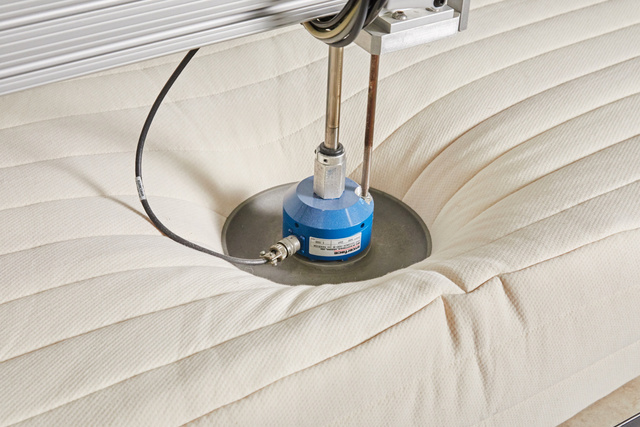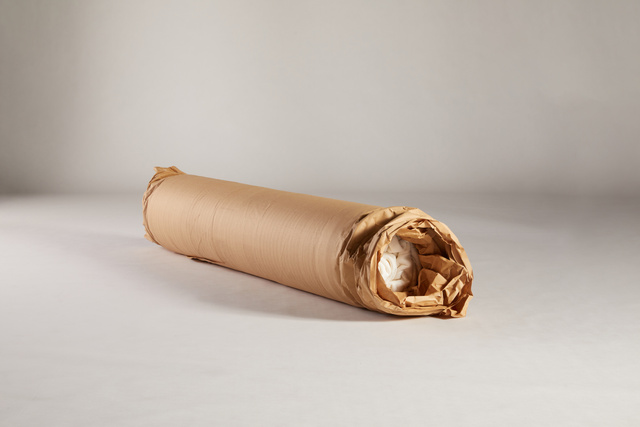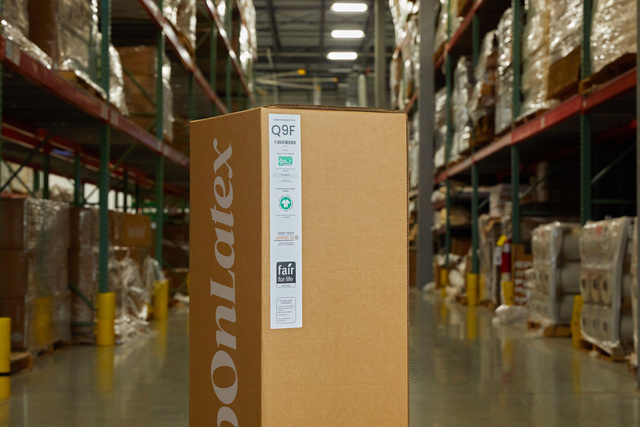What is ILD?
We break down what ILD is, is not, and how to pick out the right firmness in this post.

What is ILD?
ILD, or indentation load deflection, measures a foam's firmness. Also referred to as IFD (indentation force deflection), the number measures how much force it takes to compress foam to a certain set point. ILD and IFD are used interchangeably in the mattress industry, but IFD is the preferred terminology by the most common standard (ASTM D3574).
ILD can be a tricky metric when mattress shopping. On the one hand, it's hard to feel confident buying a mattress online without some comprehension of its firmness. On the other hand, ILD can be pretty inconsistent with different companies measuring and reporting it differently.
This journal post will tell you about how ILD is measured and reported, some fundamental issues with ILD, and other ways to find the right mattress for you.
What ILD is NOT…
Just like many other concepts in our industry, ILD has been misconstrued and as a result, there are many ILD test misconceptions. That’s why we find it important to clarify what ILD is NOT.
ILD is NOT a Unit of Measurement.
Have you ever seen a company report something like “35 ILD” or “an ILD of 35”? If so, you’re seeing a misuse of the abbreviation “ILD”. According to the most common standard for measuring ILD, it should be reported in Newtons (N), but it is often reported instead as pound-force (lbf), and sometimes in kilogram-force (kgf). ILD is not a unit of measurement in and of itself.
ILD is NOT measured at a set height.
There is no standard thickness stated in the two ILD test standards for measuring foam. One company might use a 6” piece of foam for testing, while another uses 4”. Considering taller pieces of foam will have more compounding pressure from the indentation test, you would get a different ILD for the same exact foam if tested at different thicknesses.
ILD is NOT always reported using the same compression amount.
Different standards instruct test measurements to be recorded at different indentation amounts. Most companies report their ILD from the 25% indentation, but some may be reporting their ILD from a different indentation interval, like 40% or 65%. Without knowing which indentation is being reported and which standard was followed, ILD numbers can’t be considered comparable.
MOST IMPORTANTLY: ILD is NOT a number you can use to compare one company’s product to another company’s product.
In a minute you’ll get to a section about the two main ways that ILD is measured, and how they differ from each other. The fact that different companies are using different standards for measuring their ILD makes it hard to compare, especially since companies rarely share which method they’ve used to get their numbers. Often, sellers get their ILD from their suppliers and report whatever number they get to their customers, so they often aren’t even conducting the tests themselves, and might not be aware of what test method was used.
Given how many different factors are at play, like indentation %, the height of the foam tested, and units being reported, sometimes two ILD numbers from very different foam firmness could look very similar. There are other factors that can influence an ILD too, like the temperature and humidity of the testing area.
The bottom line of all of this is that it's hard to know if different companies’ ILDs are relative to each other. In all likelihood, the ILD tests weren't identical, making the comparison murky and uncertain.
How ILD is Measured
ILD/IFD isn’t always measured the same way. The most common standard for measuring ILD is set by ASTM (American Society for Testing and Materials). Some companies, and particularly international distributors, use a different standard created by the ISO (International Organization for Standardization) for their ILD rating.
In both cases, the general process includes a piece of foam being pressed with a metal plate, and at certain intervals, the force of the foam pressing against the plate is recorded as an ILD number. Below is a breakdown of the two standards mentioned above and how they differ from each other.
The ASTM (D3574- Standard Test Methods for Flexible Cellular Materials) guidelines are summarized below:
Preflex the sample by pressing the test plate down on the foam until it indents down 75% of the foam thickness. This is done twice, with the plate clearing the sample between presses.
Let the sample rest for 6 minutes.
Lower the test plate at a 50mm/minute speed until it hits 4.5N of force. Record this value as the height of the foam sample.
Continue plate at 50mm/min until the sample has indented the foam 25% and hold for one minute. Record the force in Newtons.
Continue to 65% indentation. Hold for one minute—record force in Newtons.
The ISO (2439:2008 Flexible Cellular Polymeric Materials) follows roughly the same process, but the standard is different in these ways from the ASTM IFD test:
ISO does only one preflex instead of two.
The height of the foam is recorded when the test plate senses 5.0N of force instead of 4.5N.
ISO has environmental requirements (temp and humidity) while ASTM does not.
Our ILD (IFD) Reporting
We conduct our own IFD testing in alignment with the requirements set by ASTM. We use a 4” thick sample from whichever foam density we’re testing. Since ASTM uses IFD (not “ILD”) in their standard, that’s how we report it on our website. Additionally, the recommendation by ASTM is that companies report their IFD results in Newtons (N). We display that value, as well as the pound-force (lbf) since lbf is the most common way to report ILD in the mattress industry. We also report our results at the 25% and 65% indentations.

How to find the right firmness for you
The truth of the matter is that every company's firmness will be a little different, and ILD reporting isn't consistent enough to be your primary metric for choosing a mattress. Instead, we recommend you talk with customer service. They should be able to make the best recommendation based on your needs and preferences. Also, pay attention to the firmness descriptions (Soft, Medium, Firm, etc.)
All in all…
Considering the inconsistencies, try not to let ILD/IFD dictate your choice in foam. Buying a foam product online requires a certain level of trust and can’t be boiled down to an exact science. That’s why we offer trial periods as well as cost-free returns. We also have experienced Customer Experience Specialists ready and willing to assist you in choosing the right firmness for your needs.



